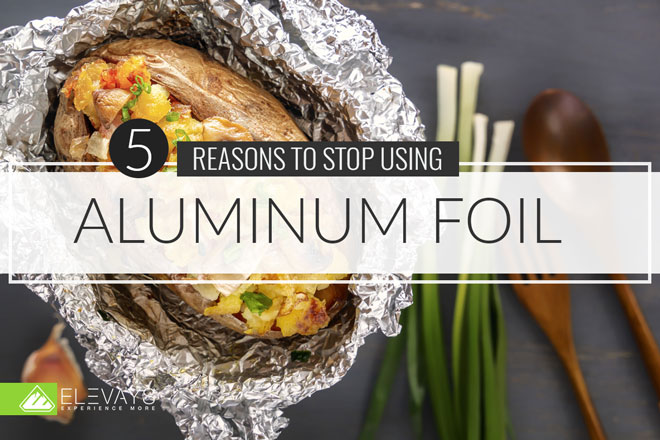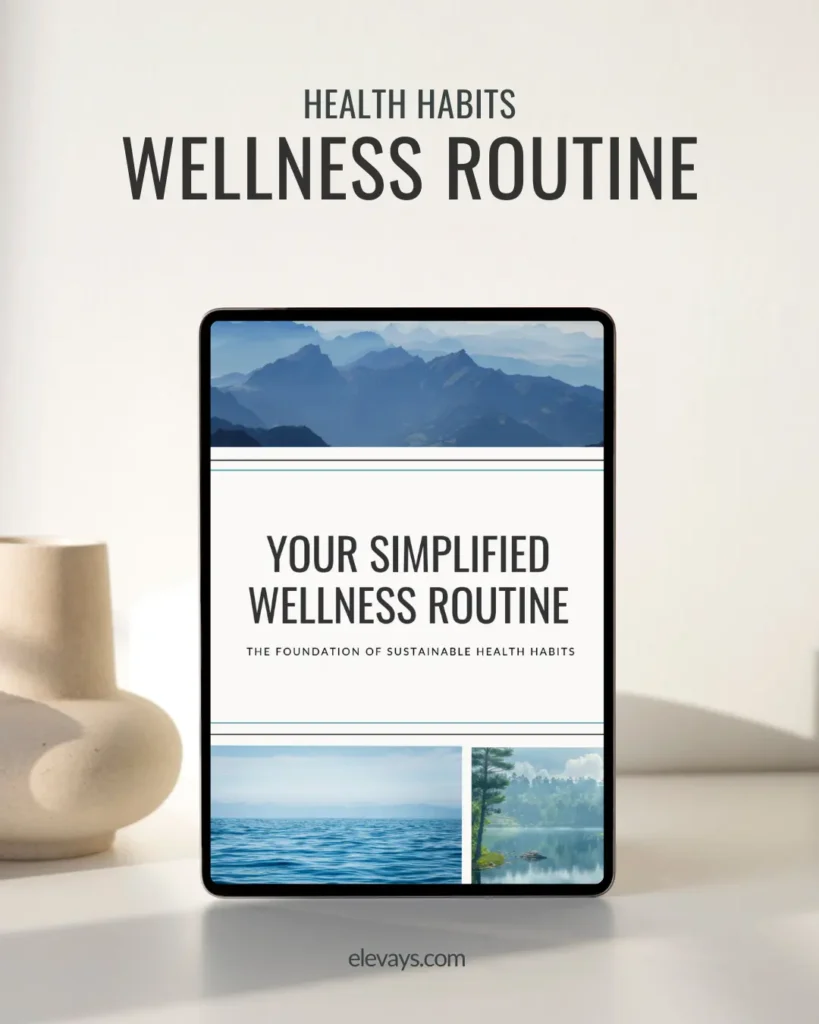When I think of Summertime, I immediately think of grilling season. I know I’m not the only foodie here that daydreams of eating grilled steaks and veggies on days when it feels like the sun may never set.
As a child, I would come home from the pool to see my mother in the kitchen wrapping up potatoes and corn on the cob in silver foil to put on the grill. My dad, the self-proclaimed grill master, would then work his magic.
We’d all sit down at the patio table and unwrap our potatoes to load up and our corn on the cob to butter up. I couldn’t wait to have family BBQ’s of my own– when I would be the grill master.
TRUTH BOMB:
You’re
Already killing it!
If You Were More Consistent With Your Wellness Routine, You’d Be Unstoppable.
Those days have finally come. I have three boys and a lovely wife, and we do have killer BBQ’s, but they are slightly different than when I was growing up.
Since my Summer days as a young boy, I’ve discovered study-supported research that took one part of the BBQ tradition out: aluminum foil.
Did anyone else’s parents use aluminum foil for EVERYTHING? It wasn’t just for barbecuing at my house. We used it to wrap sandwiches for school, save leftovers, and roast veggies or salmon in the oven.
I won’t lie- I was a little disappointed when I first fell upon this research years ago. Since then, I’ve learned how to cook, grill, and save without it– and instead use alternatives that are better for my family and the environment.
In this article, I’m going to share with you the disheartening research behind using aluminum foil and then offer affordable, practical, and effective alternatives.
Does Aluminum Foil Belong in Your Kitchen?
Today, more than ever, we are exposed to toxic heavy metals. Whether from pesticides, makeup, tap water, or fish- our bodies carry a heavy burden. Aluminum is one of those toxic heavy metals.
It’s one of earth’s most common elements and shows up naturally in water and plants (and, therefore, the animals who eat the plants) (1). However, thanks to the popularity of aluminum foil used during food preparation and aluminum-based food preservatives, people today may be exposed to significantly more aluminum than is safe.
One of the main problems with chronic small exposure to heavy metals like aluminum is that they become more dangerous over time. You may be thinking that using aluminum foil or eating canned food every once and a while is ok, the truth is- aluminum toxicity only gets stronger and more dangerous.
Aluminum lurking in your body is oxidizing, short-circuiting neurotransmitters, and causing serious damage to organs, including your brain! Here are the top 5 reasons you need to start using an aluminum foil alternative:
1. Aluminum Leaches Into Foods
In a study published in 2006, researchers found that food baked in aluminum foil had significant amounts of aluminum leached into it.
Chicken and red meat experienced somewhere between a 76%-115% increase in food aluminum content to as much as a 378% increase (the latter was observed in samples baked for twenty minutes at 482°F).
The study pointed out that the amount of aluminum in the cooked food was low enough to not pose a risk, according to the World Health Organization (WHO) standards. But it also pointed out that “eating meals prepared in aluminum foil may carry a risk to the health by adding to other aluminum sources.”(2).
This study isn’t the only one to find that aluminum leaches into foods cooked in it–a 2012 article found comparable results (3). This study also found that acidic foods caused a dramatic increase in the amount of aluminum leached into food after being cooked in foil.
2. Your Aluminum Exposure is Probably Higher Than You Think
Most of us are exposed to far more aluminum than we think. For starters, aluminum lurks in processed foods due to its reliance as a preservation additive. It’s also found in common pesticides, herbicides, and fungicides. A report commissioned by the European Food Safety Authority reports that high concentrations of aluminum are found in the following foods:
- Breads, cakes, biscuits, and pastries
- Vegetables (including mushrooms, spinach, radish, swiss chard, lettuce, and corn salad)
- Dairy products
- Sausages
- Shellfish
- Baking mixtures with large amounts of sugar
- Tea leaves
- Herbs
- Cocoa and cocoa products
- Spices
(4)
But that’s not where it ends. Aluminum is found in personal care products and even pharmaceuticals. One of the most common examples is conventional antiperspirant. Conventional deodorant companies rely on aluminum as a key ingredient to keep customers sweat glands from releasing sweat. The American Cancer Society found that aluminum based products are a huge risk factor for cancer- especially breast cancer (3).
All these “safe” amounts of aluminum in our food, personal care products, pharmaceuticals, and water add up. This is why it’s so important to minimize our exposure in places that we can control- like our kitchens.
3. Aluminum Wreaks Havoc on Bodily Systems
Toxic heavy metals, including aluminum, oxidize and cause inflammation and chronic destruction to our bodily systems. Aluminum was first discovered in the brains of Alzheimer’s patients in the 1960’s. In a literature survey that looked at fifteen years of aluminum research, 68% of studies discovered a relationship between aluminum and Alzheimer’s (4).
Aluminum also causes damage to our neurotransmitters resulting in symptoms like ADD, ADHD, brain fog, fatigue, OCD, mood disorders, viral infections, and more.
The European Food Safety report I mentioned earlier also notes that aluminum is a known neurotoxin, embryo disruptor, and reproductive system disruptors (5). These results are especially concerning when you consider that aluminum is known to enter the brain, placenta, and fetus (5).
4. Aluminum Foil is Not As Convenient As You Think
One of the reasons aluminum foil is so popular is because it’s so darn convenient. Many of us use it for everything from food storage to helping keep pans, grills, and ovens clean. However, aluminum foil may not be as convenient as we’d like to think!
Using aluminum foil may cause damage to your oven, for example. In this article, experts point out that using aluminum foil to line your oven can impede air circulation or even damage your appliance.
5. Aluminum Hurts the Environment
The final reason to look for an aluminum foil alternative is an environmental one. Did you ever question the production process?
It takes approximately 170 million BTUs (about 1,400 gallons of gasoline) to produce one ton of aluminum– emitting about 12 tons of greenhouse gases. Not only that, but aluminum also takes 400 years to break down! (6)
Ok so yes–tin foil is recyclable, but that doesn’t mean people are doing it! Aluminum foil is only recyclable when it’s not greased up. But the fact that it makes for an easy clean-up and a grease-free kitchen it one of the main reasons why we use it in the first place.
Alternatives to Aluminum Foil
Here’s what we do: wrap responsibly, grill consciously, and we protect our health and our earth.
For the Grill
Instead of using aluminum foil to grill, try using a Himalayan Sea Salt Block. A salt block is perfect for fish, poultry, and meat allowing for a natural and delicious seasoning.
You can also opt for a stainless steel basket that is amazing for veggies, sirloin tips, and stir fry!
For the Oven
If you love to roast veggies, bake fish or poultry, try lining your oven pan with unbleached parchment paper.
Other oven options include stainless steel cookware, cast iron pans, or glass cookware.
For Leftovers
Bee’s Wrap is my family’s go-to for saving leftovers and making lunches. Made from natural ingredients like bee’s wax and jojoba oil, these wraps are non-toxic and keep our food fresh. We also love them because they are reusable! Good for us and good for the earth.
For Clean Up
If you’ve relied on foil to keep your oven clean, the good news is that there are silicone oven mats designed to do just that, without damaging your oven. These mats can be removed, cleaned, and then put back in the oven, making clean up a breeze!
Now that you know the dangers of cooking and saving with aluminum foil, what is the first switch you will make? Do you know of other alternatives that are just as awesome as the ones I listed above? Let me know in the comments below!
Sources:
- Sato, K., Suzuki, I., Kubota, H., Furusho, N., Inoue, T., Yasukouchi, Y., & Akyama, H. (2014). Estimation of daily aluminum intake in Japan based on food consumption inspection results: impact of food additives. Food Science & Nutrition, 2(4), 389-397. Abstract: https://www.ncbi.nlm.nih.gov/pmc/articles/PMC4221837/
- Turhan, S. (2006). Aluminium contents in baked meats wrapped in aluminium foil. Meat science, 74(4), 644-7. Abstract: https://www.ncbi.nlm.nih.gov/pubmed/22063217
- https://www.cancer.org/cancer/cancer-causes/antiperspirants-and-breast-cancer-risk.html4. Bassioni, G., Mohammed, F., Al Zubaidy, E. & Kobrsi, I. (2012). Risk Assessment of Using Aluminum Foil in Food Preparation. International Journal of Electrochemical Science, 7(2012), 4498-4509. Full text: http://www.electrochemsci.org/papers/vol7/7054498.pdf
- Ferreira, P., de Almeida Piai, K., Takayanagui, A., & Segura-Munoz, S. (2008). Aluminum as a risk factor for Alzheimer’s disease. Revista Latino-Americana de Enfermagem, 16(1). Full text: http://www.scielo.br/scielo.php?script=sci_arttext&pid=S0104-11692008000100023
- Aguilar, F., Autrup, H., Barlow, S., Castle, L., Crebelli, R., Dekant, W., … & Toldrá, F. (2008). Safety of aluminium from dietary intake. The EFSA Journal (2008)754, 1-34. Full text: https://efsa.onlinelibrary.wiley.com/doi/epdf/10.2903/j.efsa.2008.754
- “Think Saving Your Food In Aluminum Foil Helps The Environment? Think Again.” Curiosity.com,curiosity.com/topics/think-saving-your-food-in-aluminum-foil-helps-the-environment-think-again-curiosity/.





READ the Latest
Health Habits
Health Habits
Longevity
Longevity